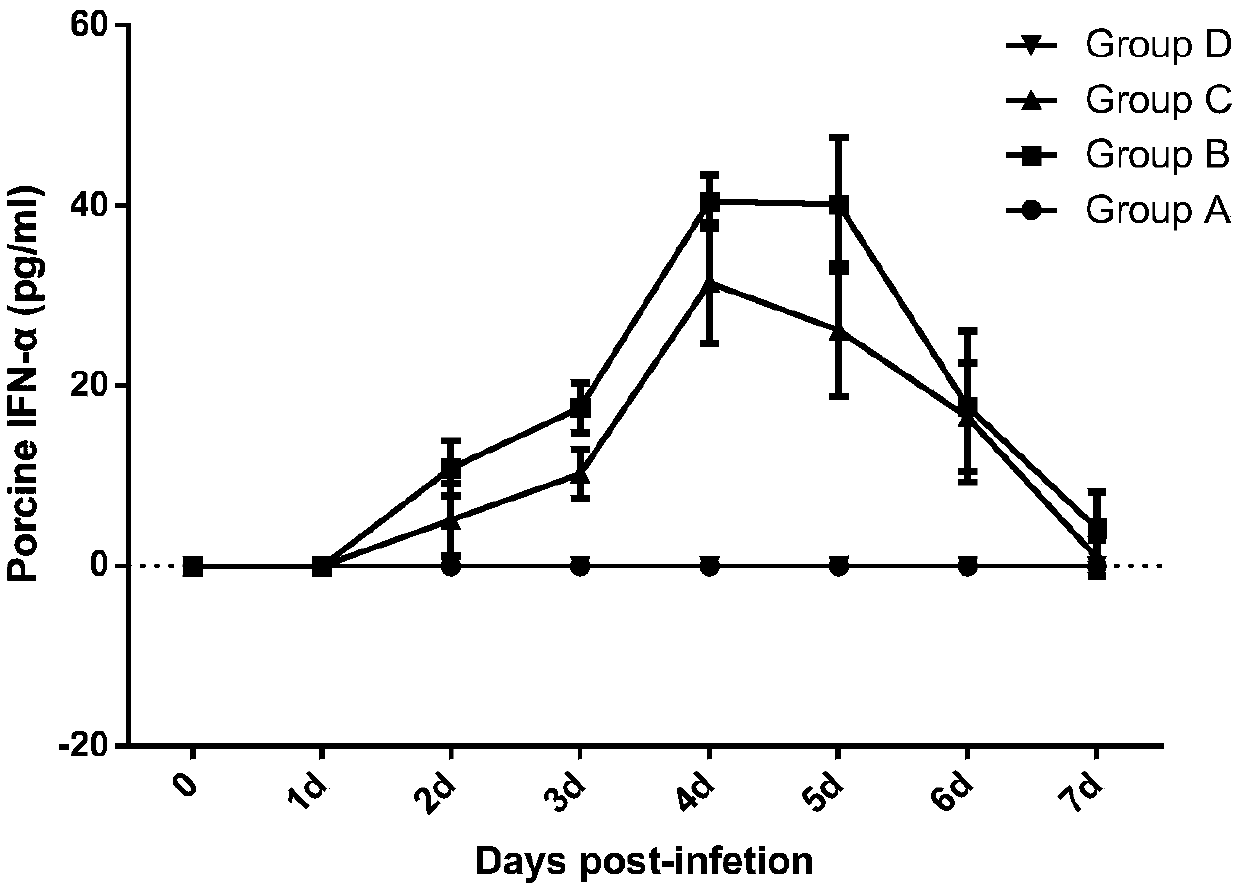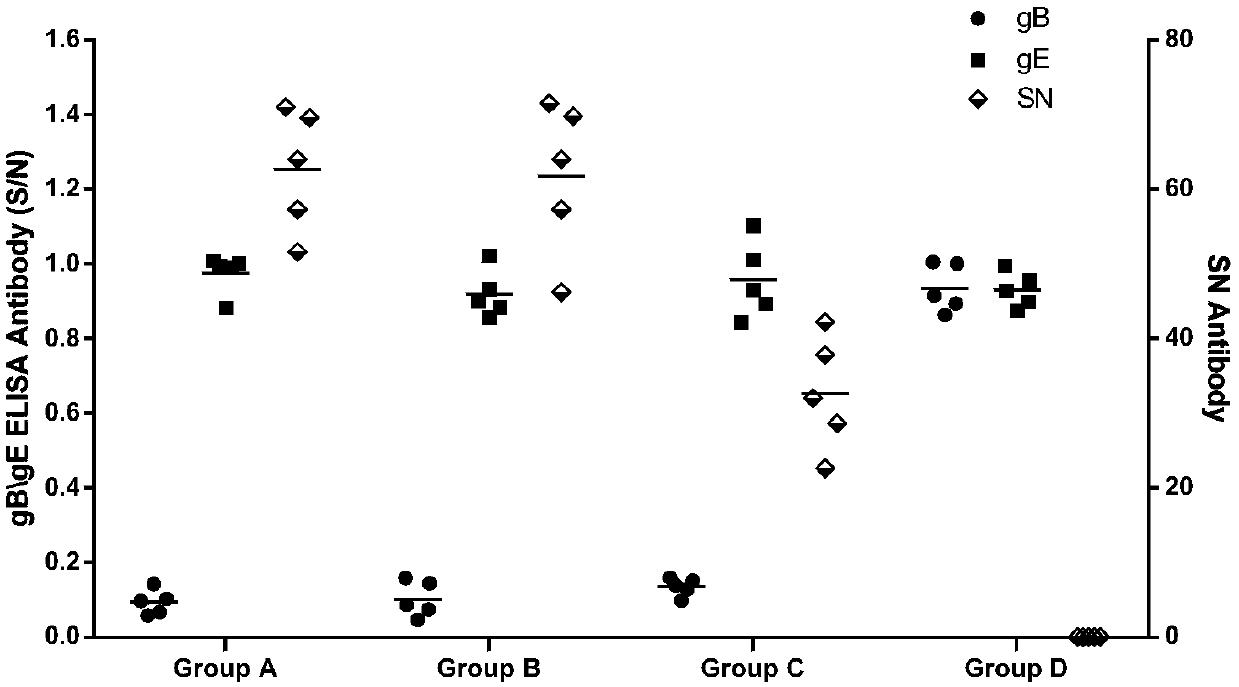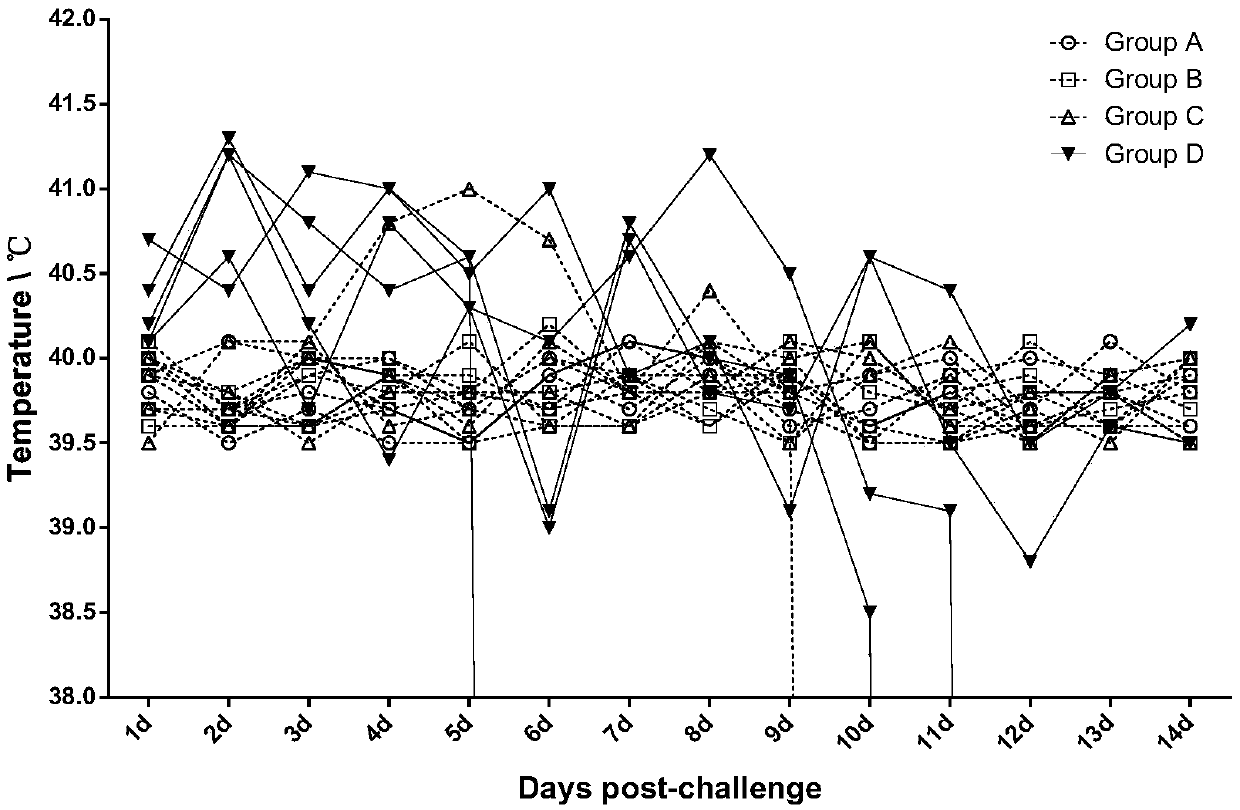Porcine pseudorabies virus with six-gene deletion, porcine pseudorabies vaccine and preparation method
A porcine pseudorabies virus and porcine pseudorabies technology, which is applied in the fields of porcine pseudorabies virus, porcine pseudorabies vaccine and preparation, can solve the problems of unsatisfactory immunization effect of porcine pseudorabies vaccine, and achieve the effect of good immune effect
- Summary
- Abstract
- Description
- Claims
- Application Information
AI Technical Summary
Problems solved by technology
Method used
Image
Examples
Embodiment 1
[0042] Artificially Modified Pseudorabies Virus
[0043] 1. Virus strain
[0044] The PRV-FJ strain was isolated from the Sichuan Provincial Key Laboratory of Livestock and Poultry Infectious Diseases from the pig disease materials of Fujian pig pseudorabies in 2015; the diseased pigs mainly showed symptoms such as elevated body temperature, poor appetite, and sneezing. PRV-FJ strain with 10 7 TCID 50 The dose per head infected 28-day-old weaned piglets without neurological symptoms, and all died 7 days after the challenge.
[0045] ST cells and 293T cells were cultured in DMEM medium containing 10% fetal bovine serum (Gibco).
[0046] 2. Construction of recombinant vector
[0047] Artificially synthesized SEQ ID NO.1, SEQ ID NO.2, and SEQ ID NO.3, then directional cloned SEQ ID NO.1 into the Ase1 restriction site of the pEGFP-C1 vector, and named it pEGFP-gI, SEQ ID NO.2 was directed to the Mlu1 restriction site of pEGFP-gI, and it was named pEGFP-gI28K. SEQ ID NO.3 was d...
Embodiment 2
[0062] PRV-TIE18G Cell Adaptability and Purity Test
[0063] Take the preserved PRV-TIE18G virus, inoculate BHK21 cells by conventional methods, cultivate until CPE appears, and harvest the virus supernatant. The PRV-TIE18G virus was serially passaged to F5. Viral TCID50 assays were performed on BHK21 cells. According to the method recorded in the appendix of "Chinese Veterinary Pharmacopoeia" (2015 edition), different generations of viruses were tested for sterility, mycoplasma and exogenous viruses.
[0064] Table 2 PRV-TIE18G cell adaptability and purity test
[0065] Virus generation
[0066] PRV-TIE18G virus F0 generation virus content is 10 7.6 TCID 50 / ml; continuous passage to the F5 generation, the virus content of the F1 generation to the F5 generation was all within 10 8.0 TCID 50 / ml or more. The results of sterility test and mycoplasma test were negative, and the results of exogenous virus test showed no exogenous virus contamination.
Embodiment 3
[0068] Pathogenicity test of PRV-TIE18G
[0069] 35 PRV antibody-negative piglets aged 1 to 3 days were randomly divided into 6 groups marked as A, B, C, D, E, F, and G groups, and the F1 generation of PRV-TIE18G virus was selected according to the following table (Table 3) Conduct an attack test. Continuous observation for 14 days after the challenge.
[0070] Table 3 Pathogenicity test of PRV-TIE18G and PRV-FJ to newborn piglets
[0071] group
Challenge strain
Virus generation
attack method
Remark
A
PRV-TIE18G
F1
10 8 TICD 50
Intranasal vaccination
B
PRV-TIE18G
F1
10 7 TICD 50
Intranasal vaccination
C
PRV-TIE18G
F1
10 8 TICD 50
D
PRV-TIE18G
F1
10 7 TICD 50
E
DMEM medium
\
2.0ml
Nasal drops + intramuscular injection
blank control
F
PRV-FJ ...
PUM
 Login to View More
Login to View More Abstract
Description
Claims
Application Information
 Login to View More
Login to View More - R&D
- Intellectual Property
- Life Sciences
- Materials
- Tech Scout
- Unparalleled Data Quality
- Higher Quality Content
- 60% Fewer Hallucinations
Browse by: Latest US Patents, China's latest patents, Technical Efficacy Thesaurus, Application Domain, Technology Topic, Popular Technical Reports.
© 2025 PatSnap. All rights reserved.Legal|Privacy policy|Modern Slavery Act Transparency Statement|Sitemap|About US| Contact US: help@patsnap.com



